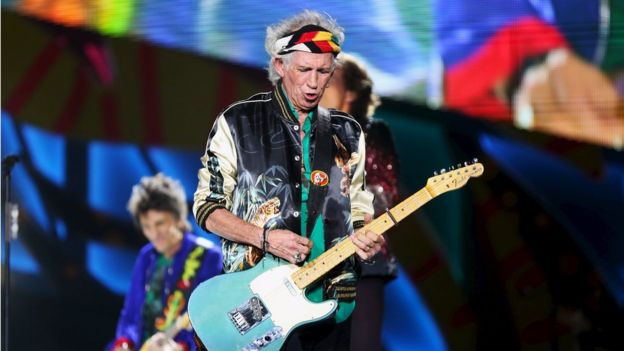
It is now precisely four weeks since I went to the Musee du Quai Branly to see the exhibition of royal art from the Edo Kingdom of Benin (poster illustrated left). I needed that much time to wind down from the complex emotions that resulted from my visit. My people, the Ezechime Clan of mid-Western Nigeria, claim origin from Benin through an ancestral progenitor named Chime.
The nine towns that comprise my clan have been subjects of great curiosity but little scholarship because their hybrid ethnicity did not fit into early colonial ethnography’s invention of ethnic identities in Nigeria. Ezechime peoples use a dialect of the Igbo language speckled with Edo words but their kingship system is completely based on Edo-Benin templates with all the major Benin royal titles and position represented. When I went to bury my father last November, we spent a long time deliberating on the orientation of his grave because the head of a dead chief must point West towards Idu, as the ancestral homeland of Benin is known among my people.
The final rituals of any such funeral are conducted in a remnant form of the Edo language, as are the songs that accompany the dead to the afterlife, even though many no longer know the meanings of the songs. You will however hear Ezechime peoples insist vehemently (using the Igbo language) that they are NOT Igbo and until you learn that they use several non-Igbo languages of ritual and communication, this kind of claim tends to be dismissed as irrelevant.
Such dismissal leads to the simplistic analysis often carried out about ethnic identities in Africa where the obvious use of a language is often enough to incorporate a people into an ethnic identity often contrary to their own histories of origin. In any case, ethnographers steered clear of Ezechime Igbo peoples and saw their hybridity as a mark of ethnic impurity. It is only in the past couple of decades that scholarship started to recognize that hybridity is the primary mode of cultural production and the idea of ethnic purity is in fact a blatantly bad idea. Ezechime peoples are the ultimate hybrids and are made up of combinant groups of Igbo, Edo-Benin, Niger Delta, and Yoruba peoples with at least two known lines of descendants of Portuguese sailors who jumped ship at Ughoton and settled inland among the local peoples. Some of these Portuguese sailors were vassals of the Benin kings who were given titles, land and wives among the outlying towns under Edo rule. Traits of this Portuguese line pop up in from time to time in the form of very light skinned, grey-eyed and red-haired children.
It is not immediately apparent that the Benin exhibition considered the above issues. Instead it chose to focus tightly on an ideal of Edo-Benin ethnicity centered on the court of the Oba (kings). This might be because the exhibition uses artworks looted from Benin in the 1897 invasion of the kingdom by British soldiers. To shrink down the boundaries of an empire composed of multiethnic identities into this singular ideal of Benin ethnicity does incalculable injury to the history of Benin.
It also produced the kind of problematic analysis that looks at modern Benin sculpture (for instance) solely in relation to ethnic Edo-Benin artists of the 20th Century without considering the impact of an artist like Ben Enwonwu, of the Onitsha-Ezechime, whose reinterpretation of classical Benin sculpture inaugurated a modernist reading of Benin art from 1950 onwards. Surely the use of various forms of Ozo title staffs (called Osisi and usually sourced from Benin artists) among the Ezechime classifies as parts of the wider Edo kingdom’s aesthetics. However, you don’t get this kind of nuance in scholarship that promotes an ethnic agenda in interpretations of indigenous African cultures.
As for the artworks shown in the Quai Branly exhibition, their history is by now very famous. In February 1897, an elite British force of about 1200 men (supported by several hundred African auxiliary troops and thousands of African porters) besieged Benin City, capital of the Edo Kingdom of Benin, whose ruler, the Oba Ovonramwen sat on a throne that was a thousand years old. The British Punitive Expedition used Maxim machine guns to mow down most of the Oba’s 130,000 soldiers and secure control of the capital city.
They set fire to the city and looted the palace of 500 years worth of bronze objects that constituted the royal archive of Benin’s history, an irreplaceable national treasure. The king and his principal chiefs fled into the countryside, pursued by British forces who lay waste to the countryside as a strategy to force the people of Benin to give up their fugitive king. According to Richard Gott, for a further six months, a small British force harried the countryside in search of the Oba and his chiefs who had fled. Cattle was seized and villages destroyed.
Not until August was the Oba cornered and brought back to his ruined city. An immense throng was assembled to witness the ritual humiliation that the British imposed on their subject peoples. The Oba was required to kneel down in front of the British military “resident” the town and to literally bite the dust. Supported by two chiefs, the king made obeisance three times, rubbing his forehead on the ground three times. He was told that he had been deposed. Oba Ovonramwen finally surrendered to stem the slaughter of his people. Many of his soldiers considered his surrender an unbearable catastrophe and committed suicide rather than see the king humiliated. A significant number, led by some chiefs, maintained guerilla warfare against the British for almost two years until their leaders were captured and executed. The remaining arms of the resistance thereafter gave up their arms and merged back into the general population.
I need to do a systematic analysis of the Quai Branly’s Benin exhibition, not as an academic evaluation but as a way of examining how the tangled skeins of Benin history impacted my own life as an individual. In that regard, bear in mind the above brief account of Oba Ovonramwen’s ouster. My grandfather—James Anyasibuokwuenu Ogbechie, son of Ugbaja, grandson of Iyeyi the Dreaded, herself a daughter of an Edo-Benin father—was in the Benin of Oba Ovonramwen when the British invaded Benin in 1897. Families lost parents, wives and children in the invasion and until his death in 1986, when I asked him about what happened in Benin on that day, he said “Uwa Kpu Epku” (the world turned upside down).
The order of things was surely inverted when a God-King is defeated in battle, his palace burnt and looted, over one hundred thousand of his people killed, he is forced to kiss the ground in submission before British troops and have the local British resident place his foot on the royal head before being sent into exile. The king’s ouster disrupted the entire region of Edo control and its local economy collapsed. My grandfather lost everything. However he worked hard, married another wife and was just getting back on his feet when simultaneous tragedies struck. The British colonial government amalgamated their protectorates to create Nigeria in 1914. They subsequently did away with local money and introduced the British currency, thereby destroying the indigenous economy and wiping out local forms of wealth.
My grandfather lost everything again and was reduced to penury. He fought against his fate and rebuilt but in 1918 but his new wife and son died in the Influenza epidemic. After a suitable period of mourning, he married my grandmother and they had nine sons many of whom died in various stages of childhood. Of the two surviving sons, one (Sylvester Okafor Ogbechie, whose name I bear) was conscripted into the British colonial auxiliaries during World War II and saw action in Burma.
He was killed on his way back to Nigeria after the war. Left with only one son and despondent, my grandfather tried to kill himself. My father intervened and was able to save his life. Thereafter, as the only remaining son on his father, my father—Francis Osenweniwe Ogbechie– spent the rest of his life working hard to raise the family out of poverty. He literally worked himself to death over the course of six decades but finally managed to rescue the family from penury and provide it with a modicum of the wealth and respect that was lost as a result of British colonization. My grandfather died in 1986 as the oldest man in the Nine Towns of the Ezechime clan. His son did not live nearly as long and passed away in 2006 finally exhausted after a lifetime of battling fate in this age our people call Enu Oyibo, the world brought about by the white incursion.
Ethnic identities are fluid among the Ezechime but this does not mean that individual identities are nebulous. I am Sylvester Okwunodu Uzugbodiuno Ogbechie the Second, Diviner Chieftain and Ozo of Onicha-Ugbo of the Ezechime Clan, son of Osenweniwe the Valiant–the king’s cousin, grandson of Anyasibuokwuenu of great perseverance, grandson of Inyaji NwaAgamunye of the devotees of Nnem-Onicha the matriach goddess, descendant of a lineage dating back to the reign in Idu of Ogbuala the Giant (Oba Ozolua, 1483-1504) who laid waste to the riverine plains (Enuani).
Last November, I buried my father on the front porch of his house in Onicha-Ugbo with his head pointing towards Idu, the ancestral homeland and watched his spirit cross the great river into the realm of the ancestors (his funeral is documentedhere: click to page 8). I sang the old songs, performed the ancient funeral rituals, and received emissaries from my cousins and uncles the kings of the Nine Towns who themselves are emissaries of the Idu/Edo kings. I say that UmuEzechime descend from Idu and that no amount of objective scholarship can undermine the strength of Ezechime claim to Benin ancestry.
I have written here at length to explain how British colonization ruined many things for my family and to point out that the kind of dry history of Africa that is common fare in scholarship is very problematic. The history of Benin is the history of its impact in the area of its empire, in the same way as the history of Britain is the history of its imperial ambitions and actions. This history is very complex. It was customary for representatives of the Benin kings to attend important royal functions in the Ezechime clan. It was also customary for all those chiefs in areas subject to the Oba’s rule to salute the royal sword of state at one time or another (pictured far right in this image).

The two swords taken from Oba Ovonramwen are now in Western museum collections. One is in the Pitt Rivers Museum and the other (the main bronze sword) was exhibited at the Quai Branly exhibition. After a lifetime of hearing about the Sword of Ovonramwen, I finally had a chance to see the sword and perform in front of it the traditional salute to Oba-Idu, the king. The sword of the King is the King and it is unlikely a chance to salute the sword would arise again soon. So I stood in front of the sword and gave the royal salute, dropping down on one knee with my hands crossed in front of my chest, palms flat out.
With his sword in hand, the Oba dances the steps of the Ododuwa masquerade, a regal move that Don Pedro Obaseki has identified as owing in part to Portuguese dance moves performed in the 17th century court of Edo Kings. I’m sure the general audience witnessing my salute to the sword at the Museum was nonplussed by my action. However, it was important that I performed this obligation even at this distance, several thousand miles away from home.
In this regard, the sword of Ovonramwen does not belong to the Berlin Museum, the British Museum, or the Quai Branly, it belongs to his great grandson, Omo n’Oba n’Edo Uku Akpolokpolo Solomon Igbinoghodua Asiokuoba Akenzua, Erediauwa the First, 38th Oba of the Edo Kingdom of Benin who sits on the throne of his forefathers in a dynasty that dates back to the 12th Century. In time, even the most objective scholarship must confront the crime committed against the Edo Kingdom of Benin as a consequence of British colonization. In the meantime, Ezechime history shows that the story of Benin is very complex and full of nuances that are often overlooked in standard scholarship.






 The two swords taken from Oba Ovonramwen are now in Western museum collections. One is in the Pitt Rivers Museum and the other (the main bronze sword) was exhibited at the Quai Branly exhibition. After a lifetime of hearing about the Sword of Ovonramwen, I finally had a chance to see the sword and perform in front of it the traditional salute to Oba-Idu, the king. The sword of the King is the King and it is unlikely a chance to salute the sword would arise again soon. So I stood in front of the sword and gave the royal salute, dropping down on one knee with my hands crossed in front of my chest, palms flat out.
The two swords taken from Oba Ovonramwen are now in Western museum collections. One is in the Pitt Rivers Museum and the other (the main bronze sword) was exhibited at the Quai Branly exhibition. After a lifetime of hearing about the Sword of Ovonramwen, I finally had a chance to see the sword and perform in front of it the traditional salute to Oba-Idu, the king. The sword of the King is the King and it is unlikely a chance to salute the sword would arise again soon. So I stood in front of the sword and gave the royal salute, dropping down on one knee with my hands crossed in front of my chest, palms flat out.